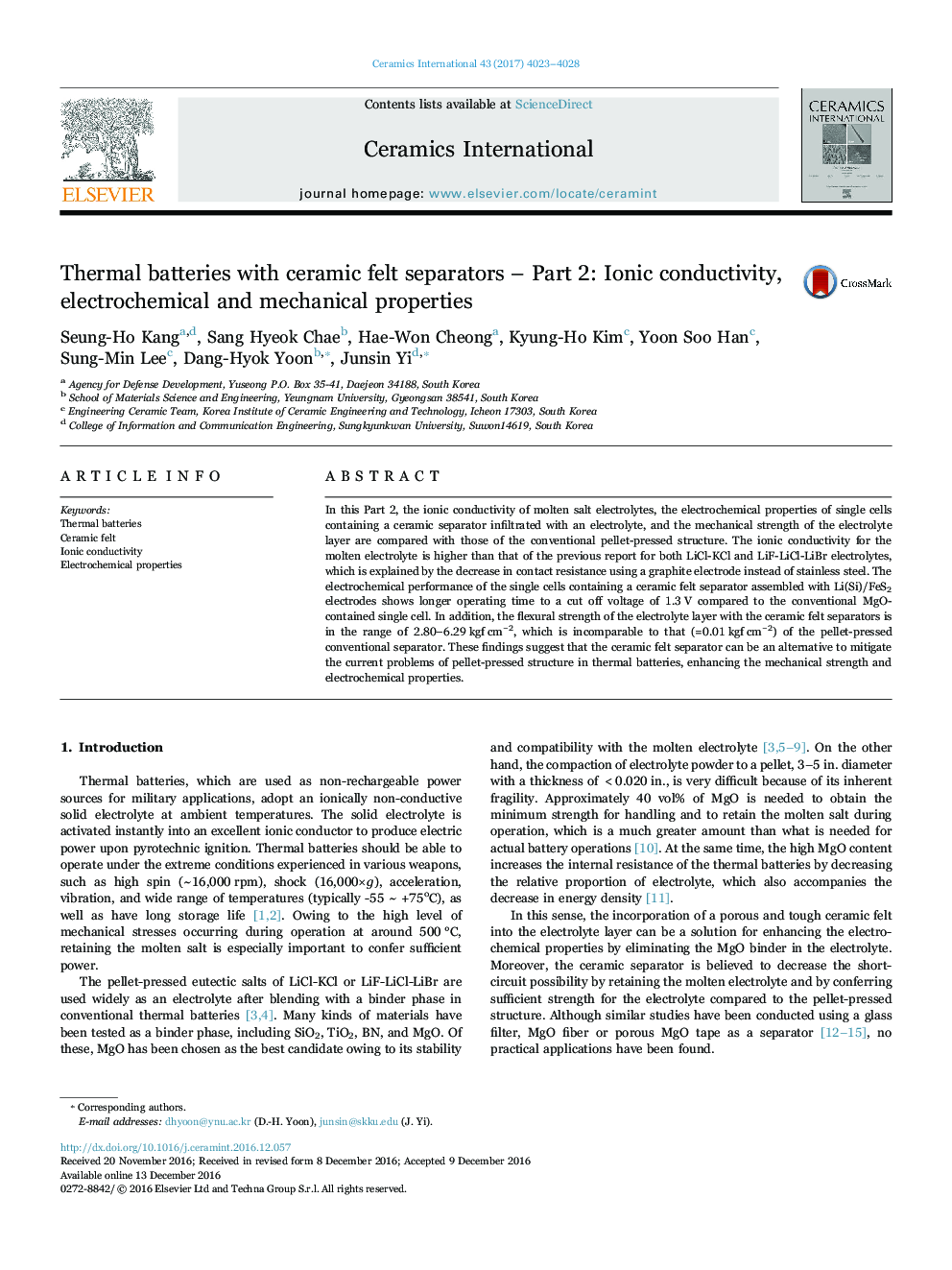| Article ID | Journal | Published Year | Pages | File Type |
|---|---|---|---|---|
| 5439053 | Ceramics International | 2017 | 6 Pages |
Abstract
In this Part 2, the ionic conductivity of molten salt electrolytes, the electrochemical properties of single cells containing a ceramic separator infiltrated with an electrolyte, and the mechanical strength of the electrolyte layer are compared with those of the conventional pellet-pressed structure. The ionic conductivity for the molten electrolyte is higher than that of the previous report for both LiCl-KCl and LiF-LiCl-LiBr electrolytes, which is explained by the decrease in contact resistance using a graphite electrode instead of stainless steel. The electrochemical performance of the single cells containing a ceramic felt separator assembled with Li(Si)/FeS2 electrodes shows longer operating time to a cut off voltage of 1.3 V compared to the conventional MgO-contained single cell. In addition, the flexural strength of the electrolyte layer with the ceramic felt separators is in the range of 2.80-6.29 kgf cmâ2, which is incomparable to that (=0.01 kgf cmâ2) of the pellet-pressed conventional separator. These findings suggest that the ceramic felt separator can be an alternative to mitigate the current problems of pellet-pressed structure in thermal batteries, enhancing the mechanical strength and electrochemical properties.
Related Topics
Physical Sciences and Engineering
Materials Science
Ceramics and Composites
Authors
Seung-Ho Kang, Sang Hyeok Chae, Hae-Won Cheong, Kyung-Ho Kim, Yoon Soo Han, Sung-Min Lee, Dang-Hyok Yoon, Junsin Yi,
